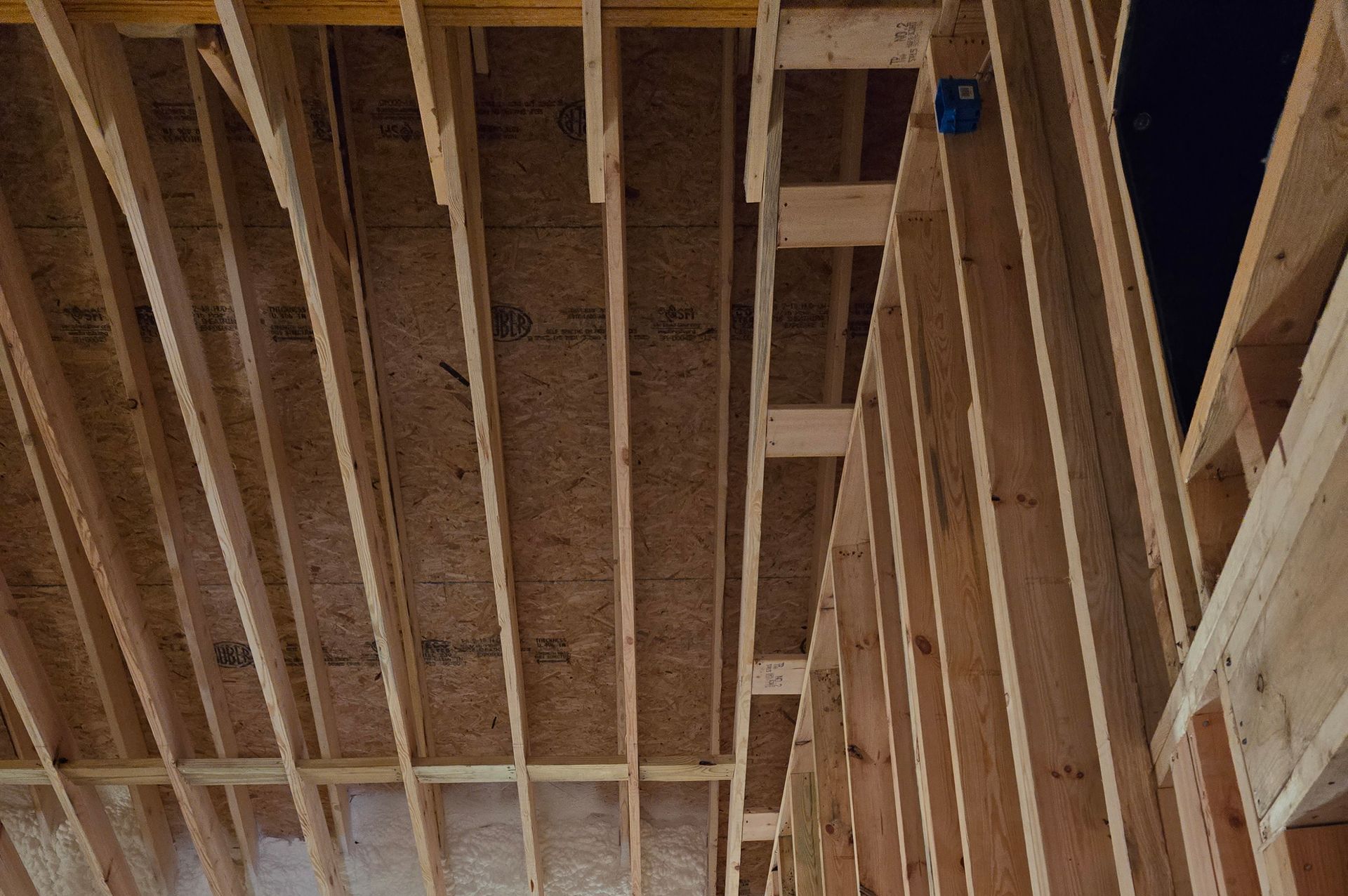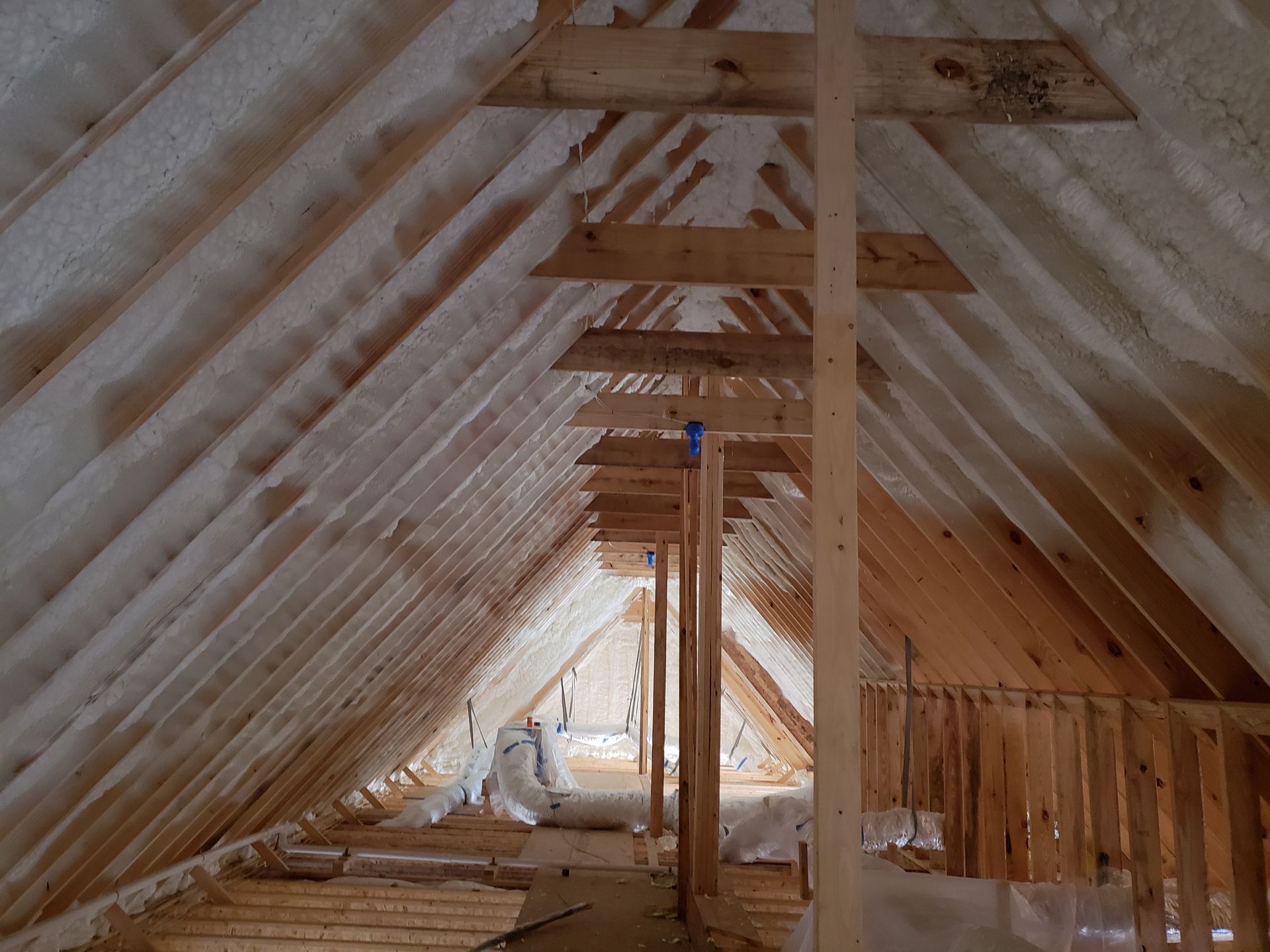Attics
Nobody understands the science of building better than Foametix. If you want to create a thermally efficient and air tight space, it's not enough just to insulate. You must choose the right insulation and air sealing system for the application, and be sure it's properly installed.
Spray Foam
Insulation in the Attic (Non-Vented Attic Spaces)
In this application, considered the most effective, by most of the SPF industry, the foam is sprayed directly to the underside of the roof between the joists, down around the rim and into the soffit areas, on the gable wall ends, and effectively sealing off and insulating the entire attic space from any air infiltration.
By now you have probably heard of this procedure with terms like: "Hot Roof design", Unvented Attic, Conditioned Attic, or "The Insulated Envelope."
We at Foametix use the term "Unvented Attic."
WE KNOW HOW TO DO IT
Get a quote
We will get back to you as soon as possible.
Please try again later.
WE KNOW HOW TO DO IT
Energy Savings
A vented attic situation will become approximately 130-140 degrees in the summer. There's no reason for your air-conditioning and vent-ductwork to have to work in that type of severe conditions. There is also opportunity for moisture to form due to condensation on these appliances.
By applying spray foam directly to the underside of the roof deck, it now insulates the attic space from the extreme heat that once radiated thorough the hot shingles sheathing and roof. The severe temperatures no longer exist in the attic. In short, the attic now becomes a passively "conditioned" space of the house that is just as comfortable as any other room in the home.
Benefits
A roof system insulated with Foametix spray foam reduces energy several ways. Energy loss from ducts located in the attic is essentially eliminated. The top of the building is much tighter resulting in less infiltration and exfiltration, so excess moisture isn't pulled into the attic. Infiltration through the ceiling is also reduced. In addition, the attic temperature is remarkably lower, which further reduces energy loads.
Energy Savings
WE KNOW HOW TO DO IT
Conduction, Convection and Radiant Heat Transfer
In a standard insulation system, ceiling insulation reduces the transfer of heat from the attic to the living space (in the summer). Attic temperatures can often approach 140 degrees or more during the day. Most of this heat enters the attic space through a multi-step process.
First, solar energy warms the shingles and sheathing. The hot sheathing then transfers heat to the rest of the attic through conduction, convection and radiant heat transfer. The 140 degree temperature of the underside roof surface drives the heat transfer process that pulls air in from all the openings in a house. And that cost you a lot of money.
By having Foametix insulate the roof surface with spray foam, the surface temperature exposed to the attic (the temperature driving the heat transfer) is reduced by as much as 40 degrees. Both conduction and convection heat transfer are proportional to a temperature difference, so that heat transfer will be reduced proportional to the drop in surface temperature. Sealing the attic is the single most cost-effective solution for lower energy bills and a comfortable home.

Standard Home
Vented attic graphic showing the natural convection process that allows air to be 'pulled' up through the house and escaping outside.

Standard Home
Unvented attic graphic showing an insulation roof deck and air tight attic that does not allow air to escape the building.
The benefits of including the attic in the insulated space are:
Lower risk of duct leakage and heat loss/gain from duct issues.
Air sealing is easier in the roof than in the ceiling.
Tests show energy costs are observably lower when the attic is sealed.
"Stack effect" from wind pressures is eliminated.
Dust and loose insulation are less likely to migrate down to the living space.


